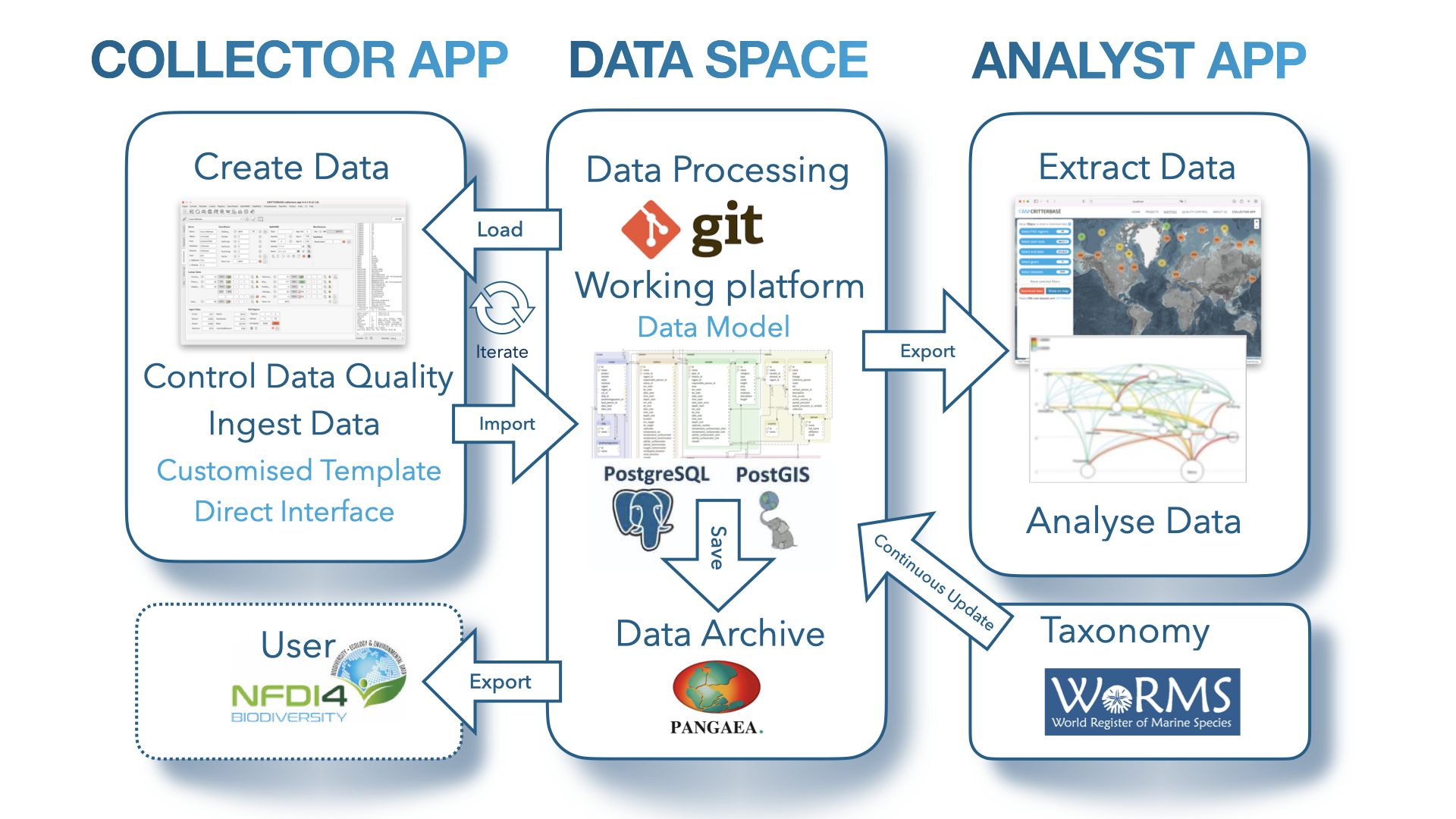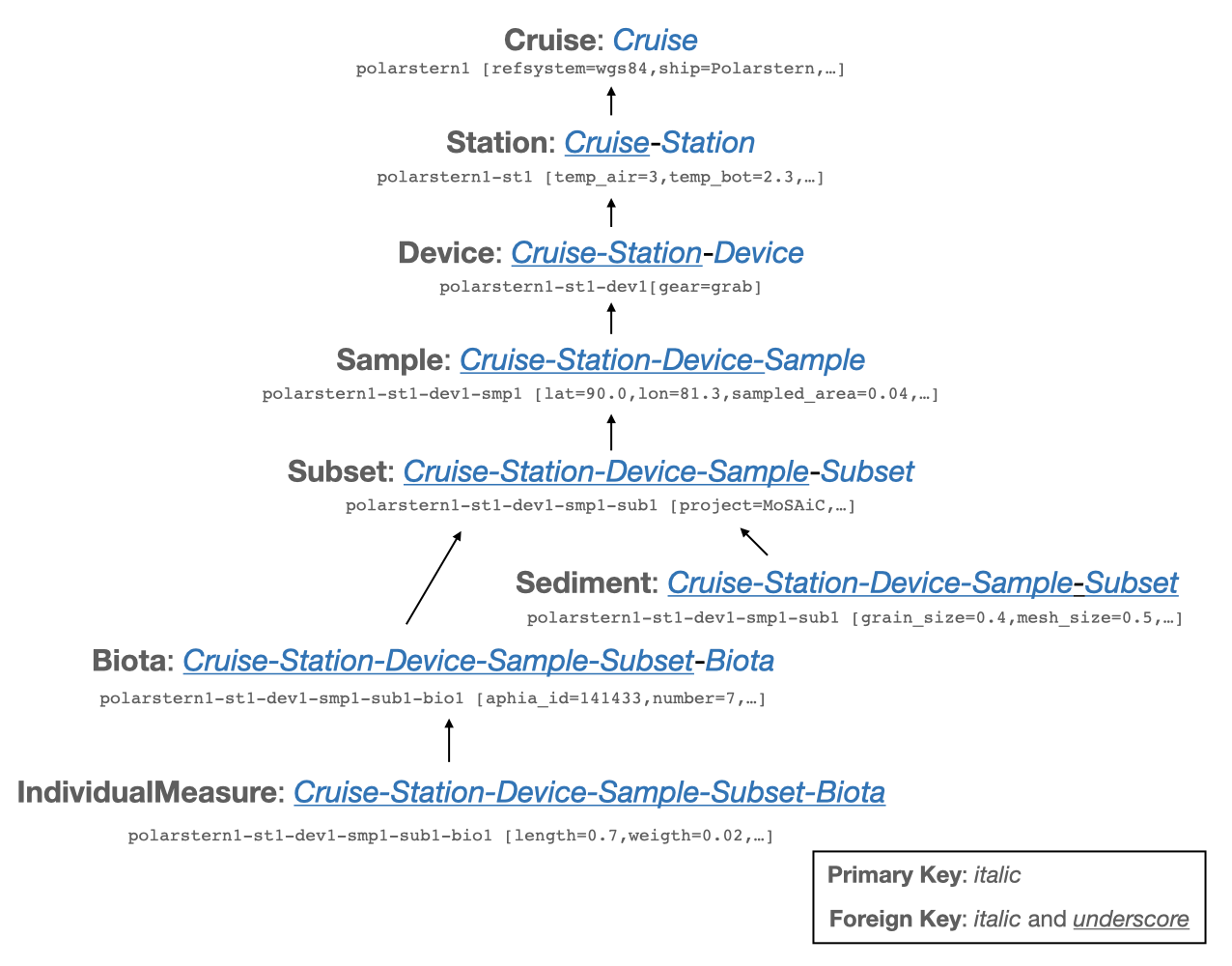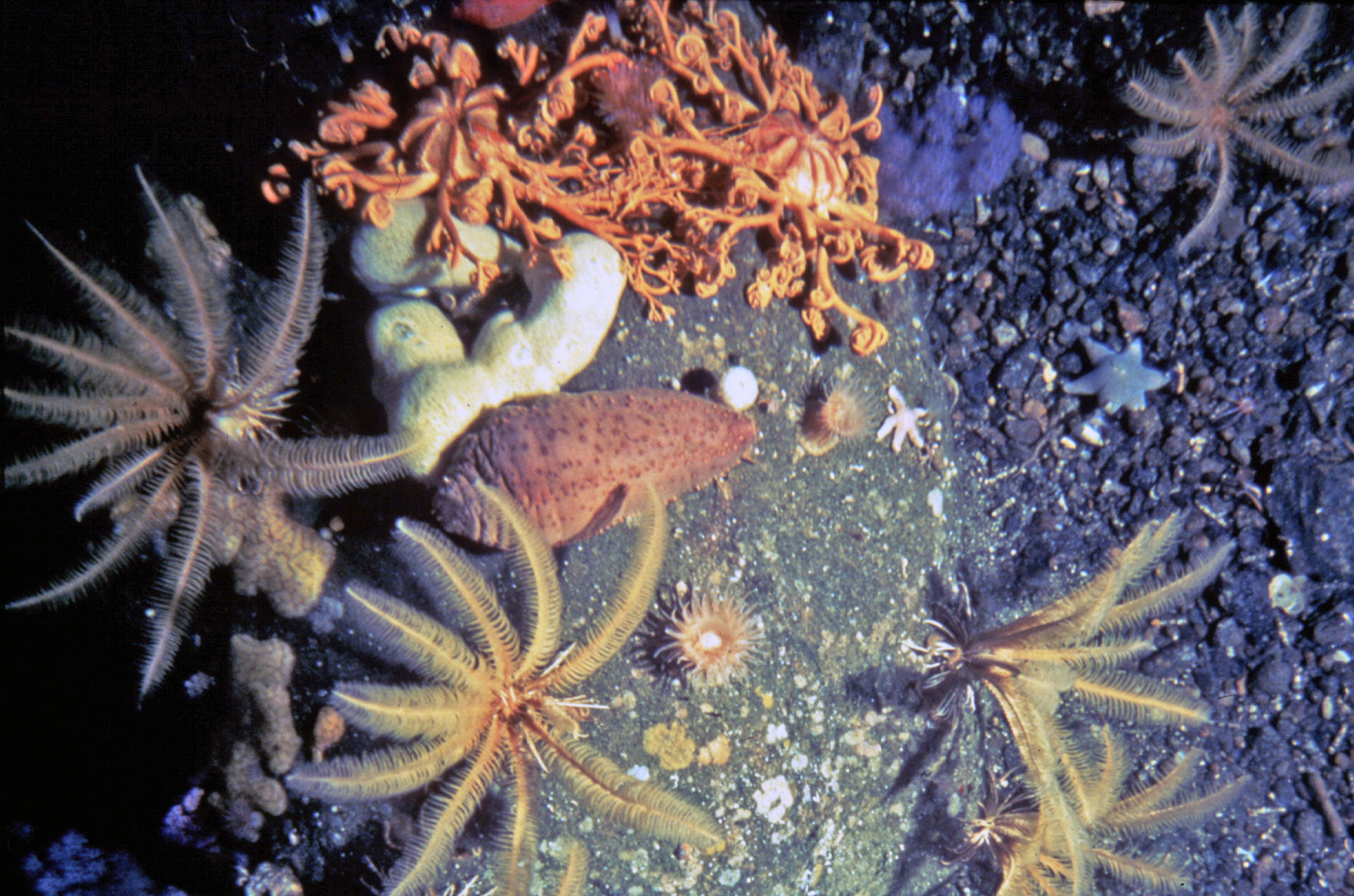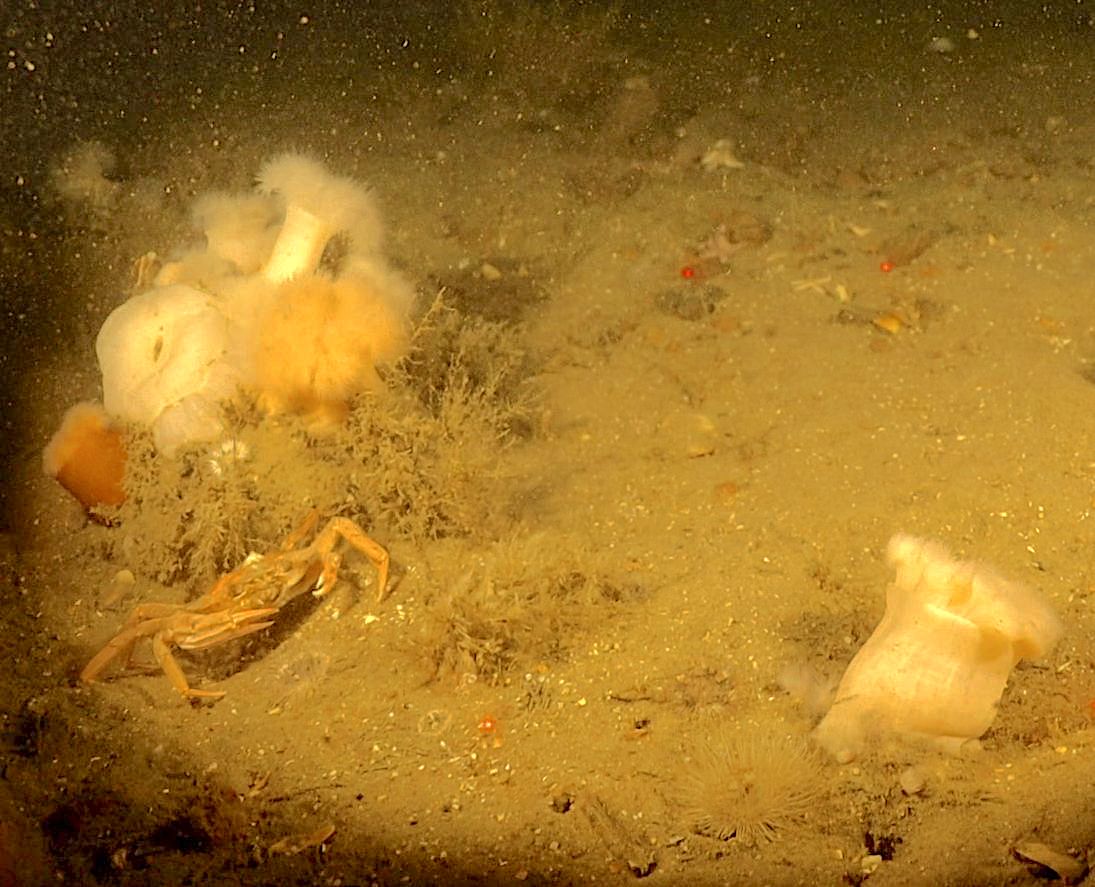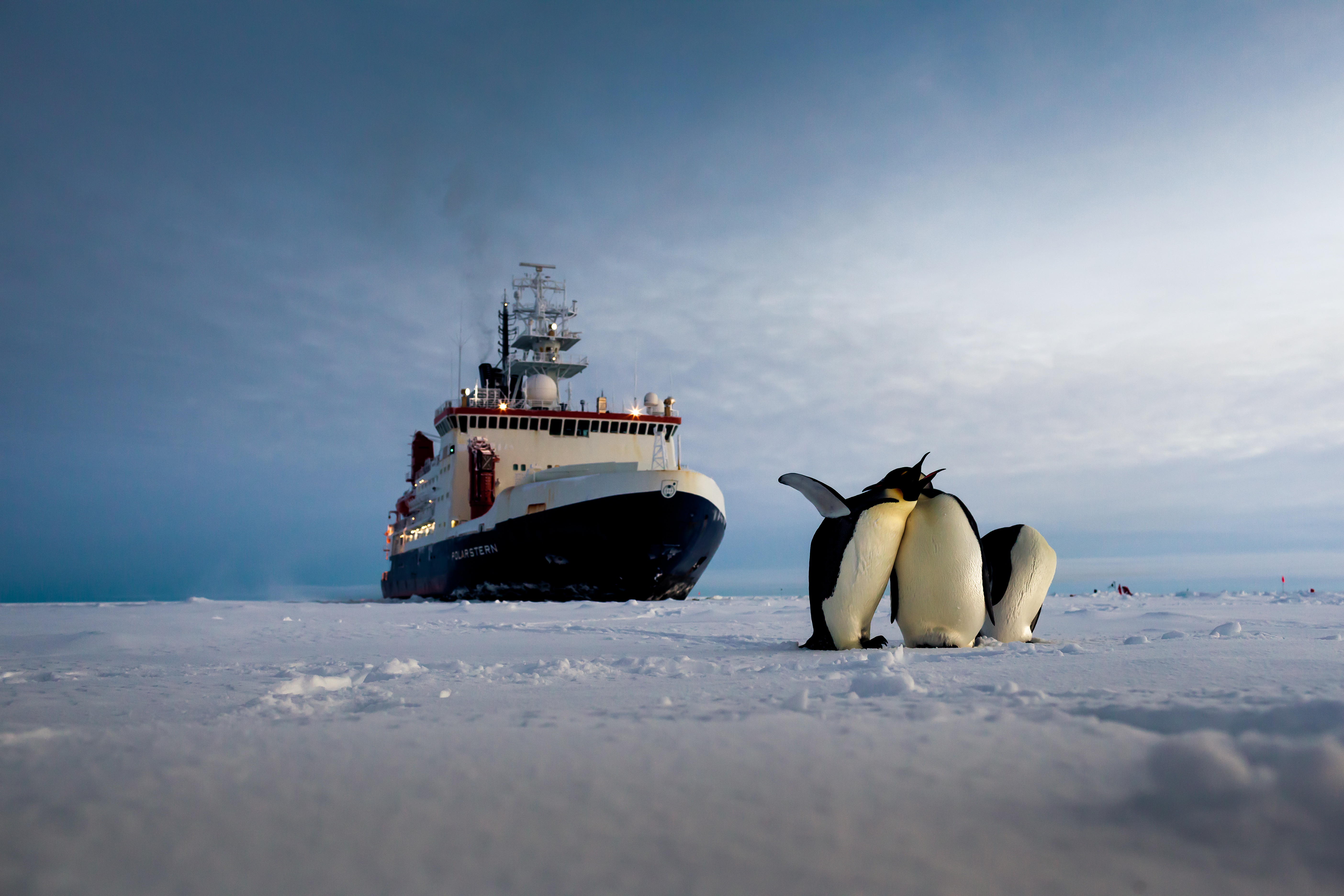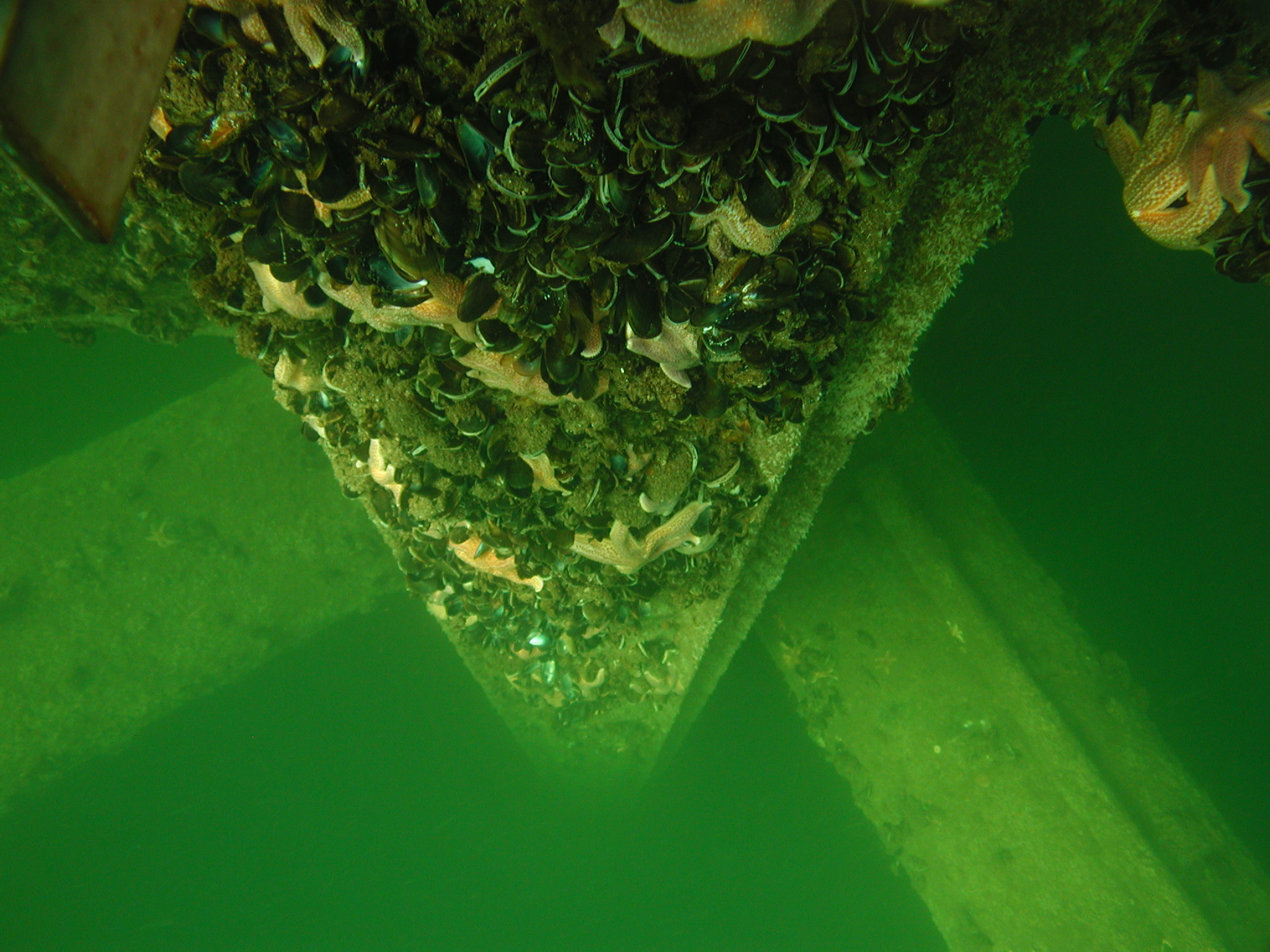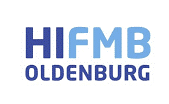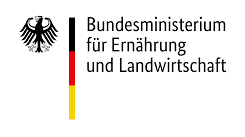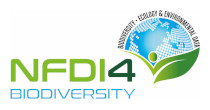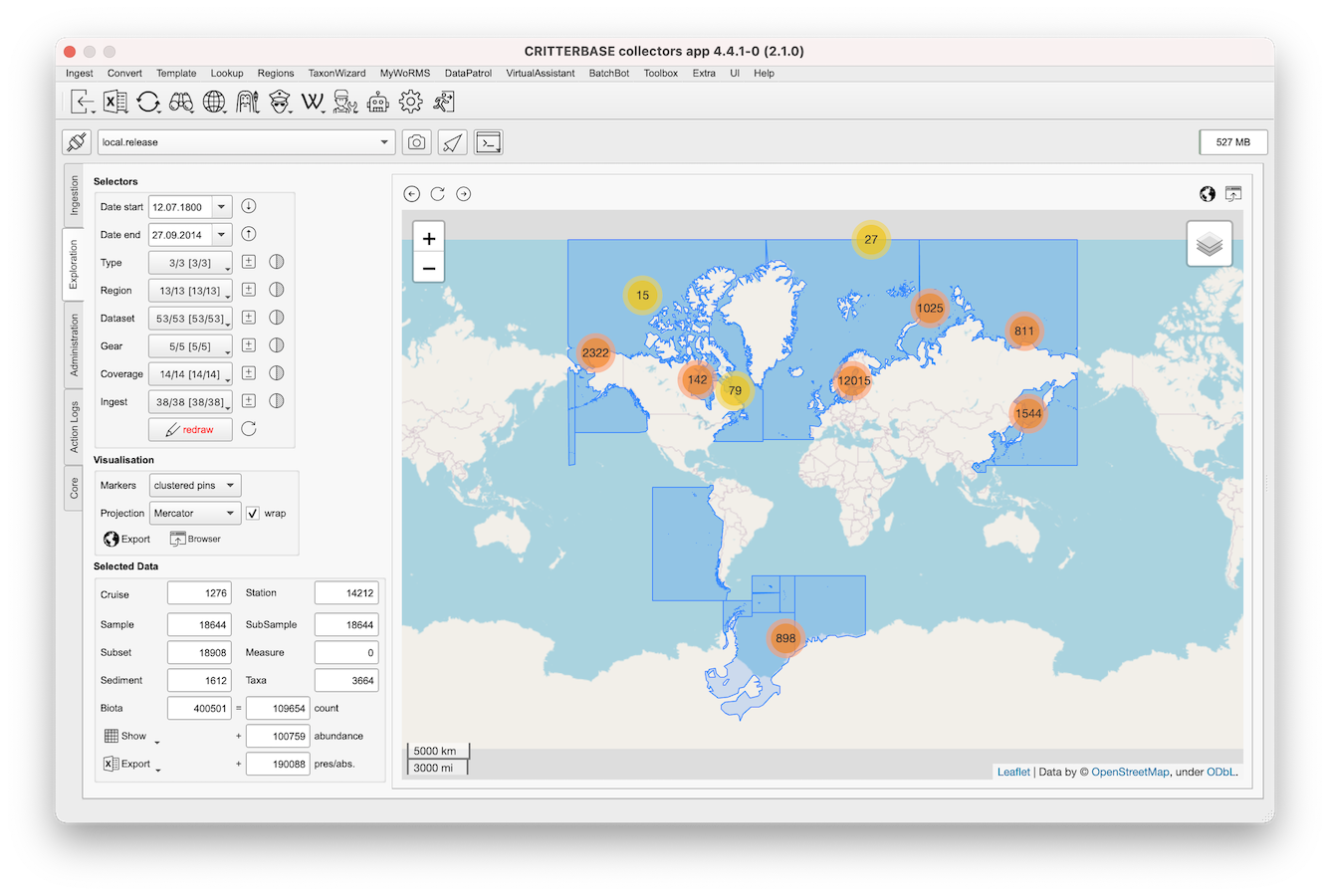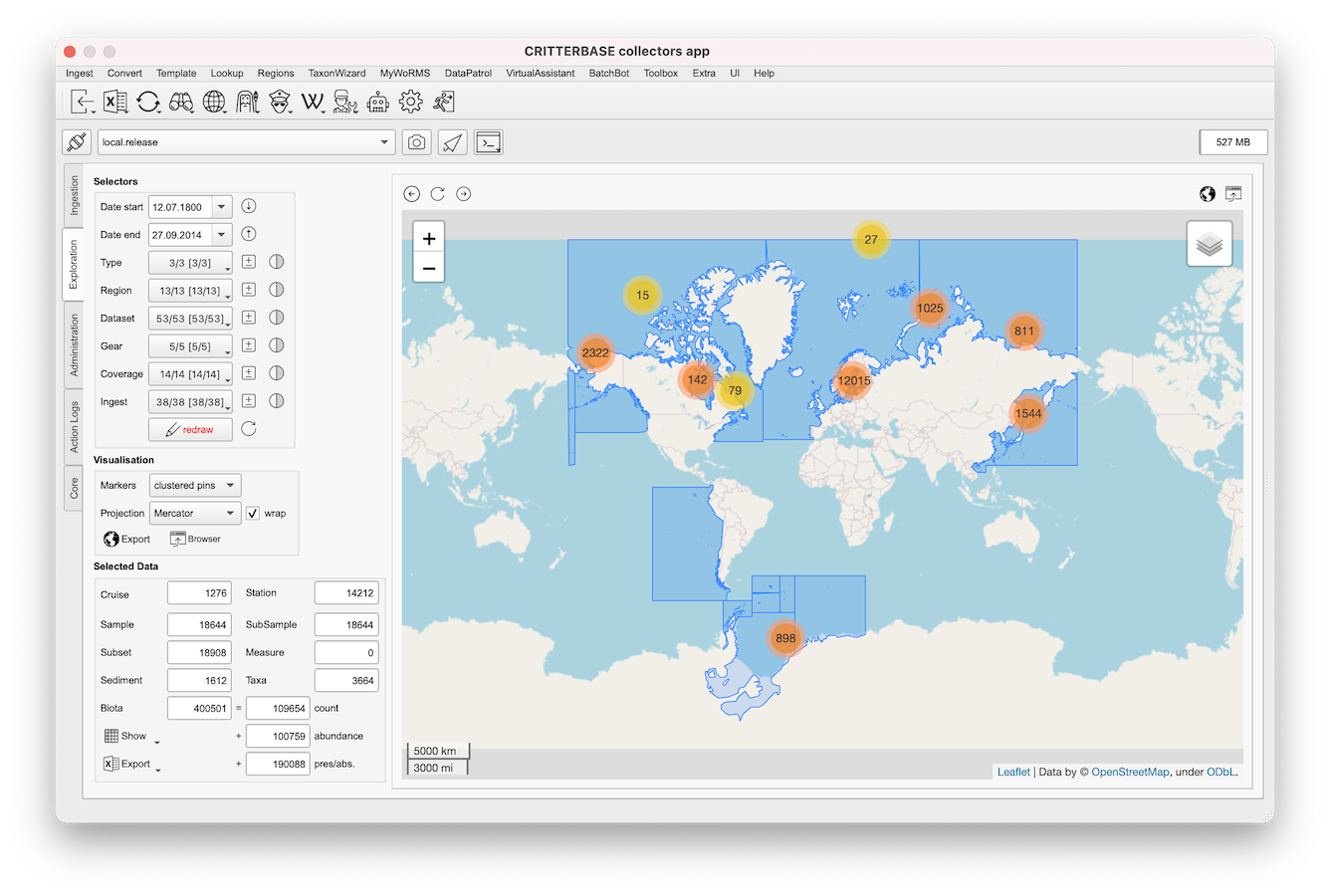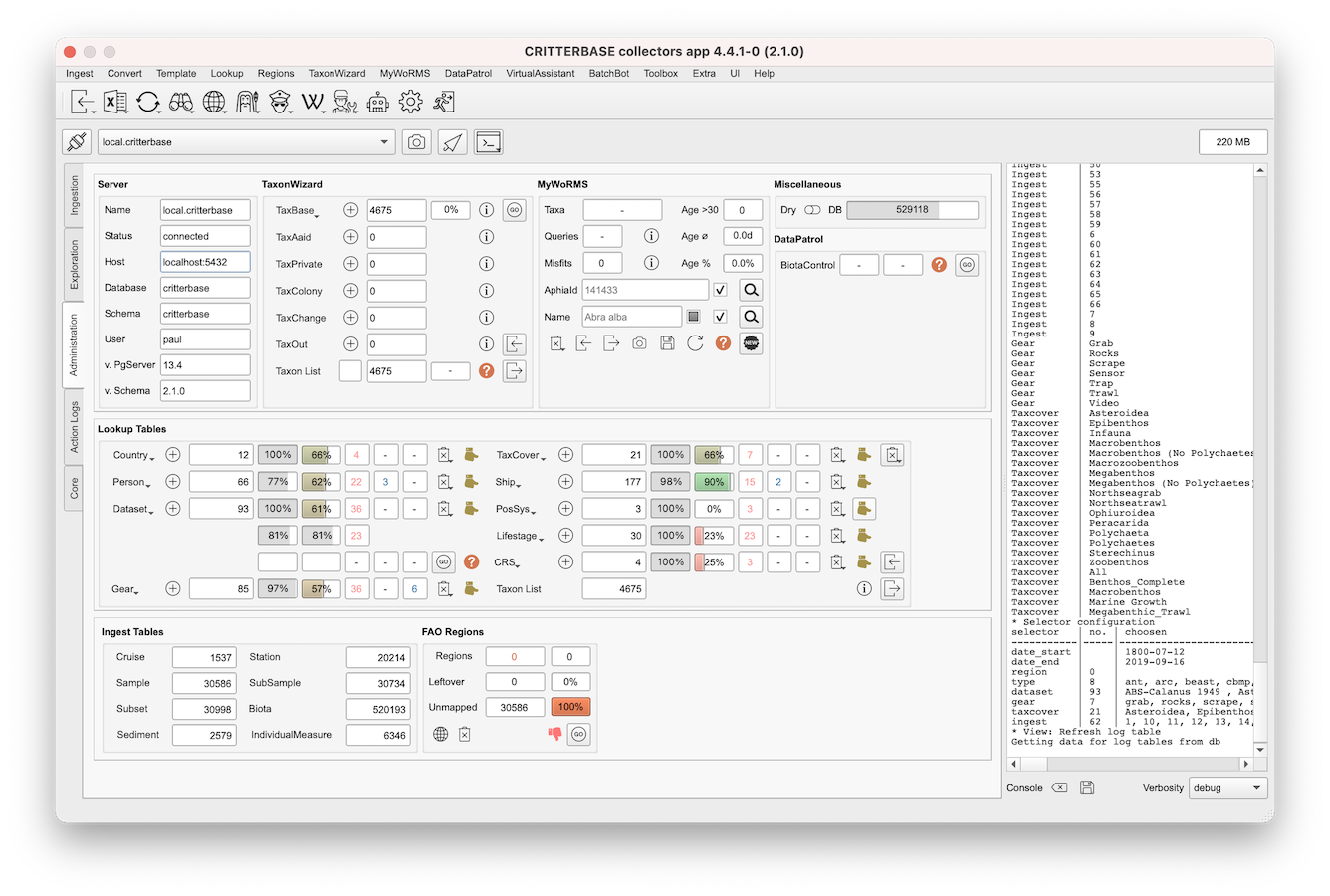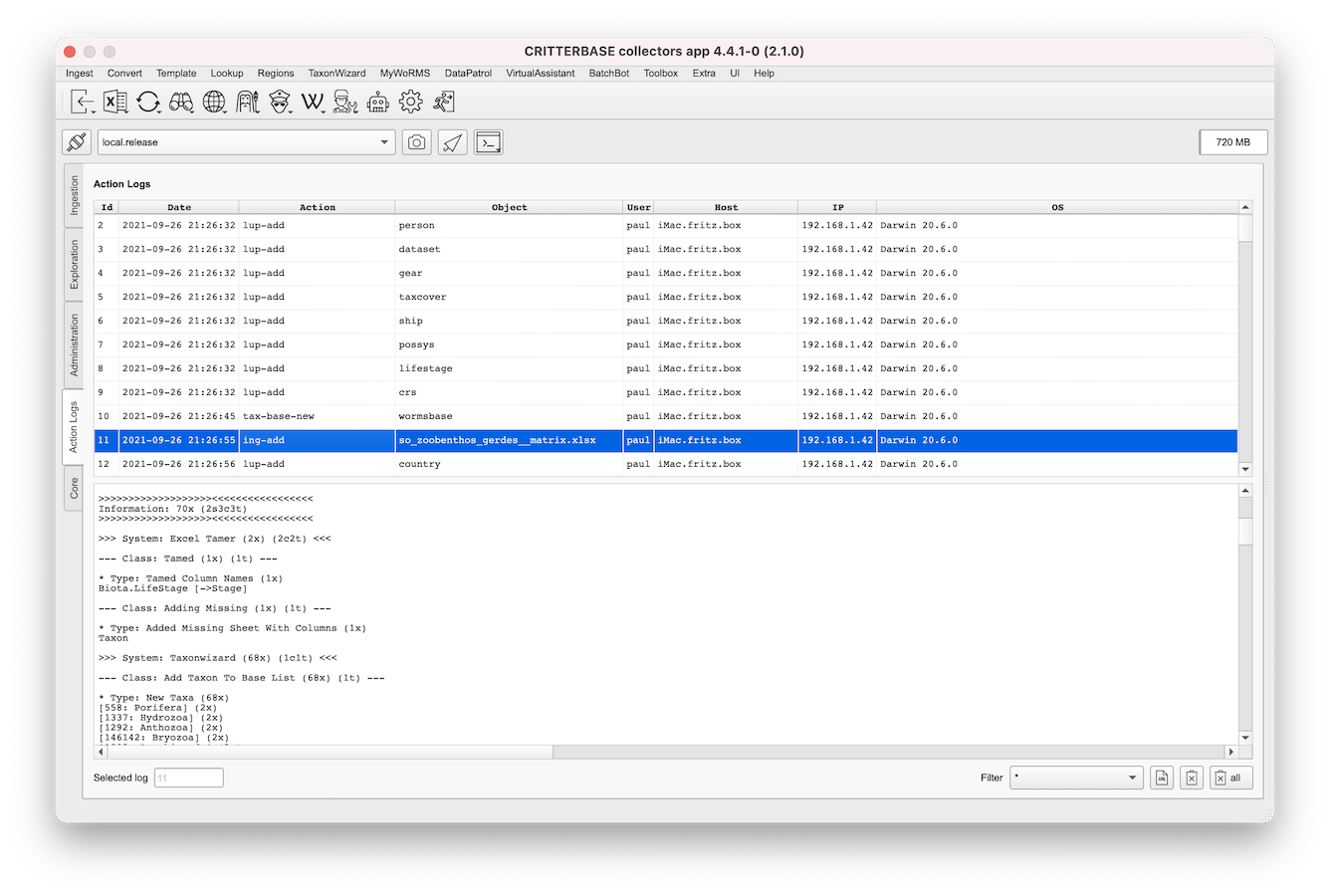We are very delighted that you have shown interest in our
enterprise. Data protection is of a particularly high priority for
the management of the Alfred Wegener Institute, Helmholtz Centre for
Polar and Marine. The use of the Internet pages of the Alfred Wegener
Institute, Helmholtz Centre for Polar and Marine is possible without
any indication of personal data; however, if a data subject wants to
use special enterprise services via our website, processing of
personal data could become necessary. If the processing of personal
data is necessary and there is no statutory basis for such
processing, we generally obtain consent from the data subject.
The processing of personal data, such as the name, address,
e-mail address, or telephone number of a data subject shall always be
in line with the General Data Protection Regulation (GDPR), and in
accordance with the country-specific data protection regulations
applicable to the Alfred Wegener Institute, Helmholtz Centre for
Polar and Marine. By means of this data protection declaration, our
enterprise would like to inform the general public of the nature,
scope, and purpose of the personal data we collect, use and process.
Furthermore, data subjects are informed, by means of this data
protection declaration, of the rights to which they are entitled.
As the controller, the Alfred Wegener Institute, Helmholtz
Centre for Polar and Marine has implemented numerous technical and
organizational measures to ensure the most complete protection of
personal data processed through this website. However, Internet-based
data transmissions may in principle have security gaps, so absolute
protection may not be guaranteed. For this reason, every data subject
is free to transfer personal data to us via alternative means, e.g.
by telephone.
1. Definitions
The data protection declaration of the Alfred Wegener
Institute, Helmholtz Centre for Polar and Marine is based on the
terms used by the European legislator for the adoption of the General
Data Protection Regulation (GDPR). Our data protection declaration
should be legible and understandable for the general public, as well
as our customers and business partners. To ensure this, we would like
to first explain the terminology used.
In this data protection declaration, we use, inter alia, the
following terms:
-
a) Personal data
Personal data means any information relating to an identified
or identifiable natural person (“data subject”). An identifiable
natural person is one who can be identified, directly or
indirectly, in particular by reference to an identifier such as a
name, an identification number, location data, an online identifier
or to one or more factors specific to the physical, physiological,
genetic, mental, economic, cultural or social identity of that
natural person.
-
b) Data subject
Data subject is any identified or identifiable natural
person, whose personal data is processed by the controller
responsible for the processing.
-
c) Processing
Processing is any operation or set of operations which is
performed on personal data or on sets of personal data, whether or
not by automated means, such as collection, recording,
organisation, structuring, storage, adaptation or alteration,
retrieval, consultation, use, disclosure by transmission,
dissemination or otherwise making available, alignment or
combination, restriction, erasure or destruction.
-
d) Restriction of processing
Restriction of processing is the marking of stored personal
data with the aim of limiting their processing in the future.
-
e) Profiling
Profiling means any form of automated processing of personal
data consisting of the use of personal data to evaluate certain
personal aspects relating to a natural person, in particular to
analyse or predict aspects concerning that natural person's
performance at work, economic situation, health, personal
preferences, interests, reliability, behaviour, location or
movements.
-
f) Pseudonymisation
Pseudonymisation is the processing of personal data in such a
manner that the personal data can no longer be attributed to a
specific data subject without the use of additional information,
provided that such additional information is kept separately and is
subject to technical and organisational measures to ensure that the
personal data are not attributed to an identified or identifiable
natural person.
-
g) Controller or controller responsible for the processing
Controller or controller responsible for the processing is
the natural or legal person, public authority, agency or other body
which, alone or jointly with others, determines the purposes and
means of the processing of personal data; where the purposes and
means of such processing are determined by Union or Member State
law, the controller or the specific criteria for its nomination may
be provided for by Union or Member State law.
-
h) Processor
Processor is a natural or legal person, public authority,
agency or other body which processes personal data on behalf of the
controller.
-
i) Recipient
Recipient is a natural or legal person, public authority,
agency or another body, to which the personal data are disclosed,
whether a third party or not. However, public authorities which may
receive personal data in the framework of a particular inquiry in
accordance with Union or Member State law shall not be regarded as
recipients; the processing of those data by those public
authorities shall be in compliance with the applicable data
protection rules according to the purposes of the processing.
-
j) Third party
Third party is a natural or legal person, public authority,
agency or body other than the data subject, controller, processor
and persons who, under the direct authority of the controller or
processor, are authorised to process personal data.
-
k) Consent
Consent of the data subject is any freely given, specific,
informed and unambiguous indication of the data subject's wishes by
which he or she, by a statement or by a clear affirmative action,
signifies agreement to the processing of personal data relating to
him or her.
2. Name and Address of the controller
Controller for the purposes of the General Data Protection
Regulation (GDPR), other data protection laws applicable in Member
states of the European Union and other provisions related to data
protection is:
Alfred Wegener Institute, Helmholtz Centre for Polar and Marine
Research
Am Handelshafen 12
27570 Bremerhaven
Germany
Phone: +49471 48311100
Email: o2a-support@awi.de
Website: data.awi.de
3. Name and Address of the Data Protection Officer
The Data Protection Officer of the controller is:
Christoph Wagner
Alfred Wegener Institute, Helmholtz Centre
for Polar and Marine Research
Am Handelshafen 12
27570 Bremerhaven
Germany
Phone: +49 (471) 4831-1637
Email: datenschutz@awi.de
Website: https://www.awi.de/nc/ueber-uns/organisation/mitarbeiter/christoph-wagner.html
Any data subject may, at any time, contact our Data Protection
Officer directly with all questions and suggestions concerning data
protection.
4. Cookies
The Internet pages of the Alfred Wegener Institute, Helmholtz
Centre for Polar and Marine use cookies. Cookies are text files that
are stored in a computer system via an Internet browser.
Many Internet sites and servers use cookies. Many cookies
contain a so-called cookie ID. A cookie ID is a unique identifier of
the cookie. It consists of a character string through which Internet
pages and servers can be assigned to the specific Internet browser in
which the cookie was stored. This allows visited Internet sites and
servers to differentiate the individual browser of the dats subject
from other Internet browsers that contain other cookies. A specific
Internet browser can be recognized and identified using the unique
cookie ID.
Through the use of cookies, the Alfred Wegener Institute,
Helmholtz Centre for Polar and Marine can provide the users of this
website with more user-friendly services that would not be possible
without the cookie setting.
By means of a cookie, the information and offers on our website
can be optimized with the user in mind. Cookies allow us, as
previously mentioned, to recognize our website users. The purpose of
this recognition is to make it easier for users to utilize our
website. The website user that uses cookies, e.g. does not have to
enter access data each time the website is accessed, because this is
taken over by the website, and the cookie is thus stored on the
user's computer system. Another example is the cookie of a shopping
cart in an online shop. The online store remembers the articles that
a customer has placed in the virtual shopping cart via a cookie.
The data subject may, at any time, prevent the setting of
cookies through our website by means of a corresponding setting of
the Internet browser used, and may thus permanently deny the setting
of cookies. Furthermore, already set cookies may be deleted at any
time via an Internet browser or other software programs. This is
possible in all popular Internet browsers. If the data subject
deactivates the setting of cookies in the Internet browser used, not
all functions of our website may be entirely usable.
5. Collection of general data and information
The website of the Alfred Wegener Institute, Helmholtz Centre
for Polar and Marine collects a series of general data and
information when a data subject or automated system calls up the
website. This general data and information are stored in the server
log files. Collected may be (1) the browser types and versions used,
(2) the operating system used by the accessing system, (3) the
website from which an accessing system reaches our website (so-called
referrers), (4) the sub-websites, (5) the date and time of access to
the Internet site, (6) an Internet protocol address (IP address), (7)
the Internet service provider of the accessing system, and (8) any
other similar data and information that may be used in the event of
attacks on our information technology systems.
When using these general data and information, the Alfred
Wegener Institute, Helmholtz Centre for Polar and Marine does not
draw any conclusions about the data subject. Rather, this information
is needed to (1) deliver the content of our website correctly, (2)
optimize the content of our website as well as its advertisement, (3)
ensure the long-term viability of our information technology systems
and website technology, and (4) provide law enforcement authorities
with the information necessary for criminal prosecution in case of a
cyber-attack. Therefore, the Alfred Wegener Institute, Helmholtz
Centre for Polar and Marine analyzes anonymously collected data and
information statistically, with the aim of increasing the data
protection and data security of our enterprise, and to ensure an
optimal level of protection for the personal data we process. The
anonymous data of the server log files are stored separately from all
personal data provided by a data subject.
6. Registration on our website
The data subject has the possibility to register on the website
of the controller with the indication of personal data. Which
personal data are transmitted to the controller is determined by the
respective input mask used for the registration. The personal data
entered by the data subject are collected and stored exclusively for
internal use by the controller, and for his own purposes. The
controller may request transfer to one or more processors (e.g. a
parcel service) that also uses personal data for an internal purpose
which is attributable to the controller.
By registering on the website of the controller, the IP
address—assigned by the Internet service provider (ISP) and used by
the data subject—date, and time of the registration are also stored.
The storage of this data takes place against the background that this
is the only way to prevent the misuse of our services, and, if
necessary, to make it possible to investigate committed offenses.
Insofar, the storage of this data is necessary to secure the
controller. This data is not passed on to third parties unless there
is a statutory obligation to pass on the data, or if the transfer
serves the aim of criminal prosecution.
The registration of the data subject, with the voluntary
indication of personal data, is intended to enable the controller to
offer the data subject contents or services that may only be offered
to registered users due to the nature of the matter in question.
Registered persons are free to change the personal data specified
during the registration at any time, or to have them completely
deleted from the data stock of the controller.
The data controller shall, at any time, provide information
upon request to each data subject as to what personal data are stored
about the data subject. In addition, the data controller shall
correct or erase personal data at the request or indication of the
data subject, insofar as there are no statutory storage obligations.
The entirety of the controller’s employees are available to the data
subject in this respect as contact persons.
7. Contact possibility via the website
The website of the Alfred Wegener Institute, Helmholtz Centre
for Polar and Marine contains information that enables a quick
electronic contact to our enterprise, as well as direct communication
with us, which also includes a general address of the so-called
electronic mail (e-mail address). If a data subject contacts the
controller by e-mail or via a contact form, the personal data
transmitted by the data subject are automatically stored. Such
personal data transmitted on a voluntary basis by a data subject to
the data controller are stored for the purpose of processing or
contacting the data subject. There is no transfer of this personal
data to third parties.
8. Routine erasure and blocking of personal data
The data controller shall process and store the personal data
of the data subject only for the period necessary to achieve the
purpose of storage, or as far as this is granted by the European
legislator or other legislators in laws or regulations to which the
controller is subject to.
If the storage purpose is not applicable, or if a storage
period prescribed by the European legislator or another competent
legislator expires, the personal data are routinely blocked or erased
in accordance with legal requirements.
9. Rights of the data subject
-
a) Right of confirmation
Each data subject shall have the right granted by the
European legislator to obtain from the controller the confirmation
as to whether or not personal data concerning him or her are being
processed. If a data subject wishes to avail himself of this right
of confirmation, he or she may, at any time, contact any employee
of the controller.
-
b) Right of access
Each data subject shall have the right granted by the
European legislator to obtain from the controller free information
about his or her personal data stored at any time and a copy of
this information. Furthermore, the European directives and
regulations grant the data subject access to the following
information:
- the purposes of the processing;
- the categories of personal data concerned;
- the recipients or categories of recipients to whom the
personal data have been or will be disclosed, in particular
recipients in third countries or international organisations;
- where possible, the envisaged period for which the
personal data will be stored, or, if not possible, the criteria
used to determine that period;
- the existence of the right to request from the controller
rectification or erasure of personal data, or restriction of
processing of personal data concerning the data subject, or to
object to such processing;
- the existence of the right to lodge a complaint with a
supervisory authority;
- where the personal data are not collected from the data
subject, any available information as to their source;
- the existence of automated decision-making, including
profiling, referred to in Article 22(1) and (4) of the GDPR and,
at least in those cases, meaningful information about the logic
involved, as well as the significance and envisaged consequences
of such processing for the data subject.
Furthermore, the data subject shall have a right to obtain
information as to whether personal data are transferred to a third
country or to an international organisation. Where this is the
case, the data subject shall have the right to be informed of the
appropriate safeguards relating to the transfer.
If a data subject wishes to avail himself of this right of
access, he or she may, at any time, contact any employee of the
controller.
-
c) Right to rectification
Each data subject shall have the right granted by the
European legislator to obtain from the controller without undue
delay the rectification of inaccurate personal data concerning him
or her. Taking into account the purposes of the processing, the
data subject shall have the right to have incomplete personal data
completed, including by means of providing a supplementary
statement.
If a data subject wishes to exercise this right to
rectification, he or she may, at any time, contact any employee of
the controller.
-
d) Right to erasure (Right to be forgotten)
Each data subject shall have the right granted by the
European legislator to obtain from the controller the erasure of
personal data concerning him or her without undue delay, and the
controller shall have the obligation to erase personal data without
undue delay where one of the following grounds applies, as long as
the processing is not necessary:
- The personal data are no longer necessary in relation to
the purposes for which they were collected or otherwise processed.
- The data subject withdraws consent to which the processing
is based according to point (a) of Article 6(1) of the GDPR, or
point (a) of Article 9(2) of the GDPR, and where there is no other
legal ground for the processing.
- The data subject objects to the processing pursuant to
Article 21(1) of the GDPR and there are no overriding legitimate
grounds for the processing, or the data subject objects to the
processing pursuant to Article 21(2) of the GDPR.
- The personal data have been unlawfully processed.
- The personal data must be erased for compliance with a
legal obligation in Union or Member State law to which the
controller is subject.
- The personal data have been collected in relation to the
offer of information society services referred to in Article 8(1)
of the GDPR.
If one of the aforementioned reasons applies, and a data
subject wishes to request the erasure of personal data stored by
the Alfred Wegener Institute, Helmholtz Centre for Polar and
Marine, he or she may, at any time, contact any employee of the
controller. An employee of Alfred Wegener Institute, Helmholtz
Centre for Polar and Marine shall promptly ensure that the erasure
request is complied with immediately.
Where the controller has made personal data public and is
obliged pursuant to Article 17(1) to erase the personal data, the
controller, taking account of available technology and the cost of
implementation, shall take reasonable steps, including technical
measures, to inform other controllers processing the personal data
that the data subject has requested erasure by such controllers of
any links to, or copy or replication of, those personal data, as
far as processing is not required. An employees of the Alfred
Wegener Institute, Helmholtz Centre for Polar and Marine will
arrange the necessary measures in individual cases.
-
e) Right of restriction of processing
Each data subject shall have the right granted by the
European legislator to obtain from the controller restriction of
processing where one of the following applies:
- The accuracy of the personal data is contested by the data
subject, for a period enabling the controller to verify the
accuracy of the personal data.
- The processing is unlawful and the data subject opposes
the erasure of the personal data and requests instead the
restriction of their use instead.
- The controller no longer needs the personal data for the
purposes of the processing, but they are required by the data
subject for the establishment, exercise or defence of legal
claims.
- The data subject has objected to processing pursuant to
Article 21(1) of the GDPR pending the verification whether the
legitimate grounds of the controller override those of the data
subject.
If one of the aforementioned conditions is met, and a data
subject wishes to request the restriction of the processing of
personal data stored by the Alfred Wegener Institute, Helmholtz
Centre for Polar and Marine, he or she may at any time contact any
employee of the controller. The employee of the Alfred Wegener
Institute, Helmholtz Centre for Polar and Marine will arrange the
restriction of the processing.
-
f) Right to data portability
Each data subject shall have the right granted by the
European legislator, to receive the personal data concerning him or
her, which was provided to a controller, in a structured, commonly
used and machine-readable format. He or she shall have the right to
transmit those data to another controller without hindrance from
the controller to which the personal data have been provided, as
long as the processing is based on consent pursuant to point (a) of
Article 6(1) of the GDPR or point (a) of Article 9(2) of the GDPR,
or on a contract pursuant to point (b) of Article 6(1) of the GDPR,
and the processing is carried out by automated means, as long as
the processing is not necessary for the performance of a task
carried out in the public interest or in the exercise of official
authority vested in the controller.
Furthermore, in exercising his or her right to data
portability pursuant to Article 20(1) of the GDPR, the data subject
shall have the right to have personal data transmitted directly
from one controller to another, where technically feasible and when
doing so does not adversely affect the rights and freedoms of
others.
In order to assert the right to data portability, the data
subject may at any time contact any employee of the Alfred Wegener
Institute, Helmholtz Centre for Polar and Marine.
-
g) Right to object
Each data subject shall have the right granted by the
European legislator to object, on grounds relating to his or her
particular situation, at any time, to processing of personal data
concerning him or her, which is based on point (e) or (f) of
Article 6(1) of the GDPR. This also applies to profiling based on
these provisions.
The Alfred Wegener Institute, Helmholtz Centre for Polar and
Marine shall no longer process the personal data in the event of
the objection, unless we can demonstrate compelling legitimate
grounds for the processing which override the interests, rights and
freedoms of the data subject, or for the establishment, exercise or
defence of legal claims.
If the Alfred Wegener Institute, Helmholtz Centre for Polar
and Marine processes personal data for direct marketing purposes,
the data subject shall have the right to object at any time to
processing of personal data concerning him or her for such
marketing. This applies to profiling to the extent that it is
related to such direct marketing. If the data subject objects to
the Alfred Wegener Institute, Helmholtz Centre for Polar and Marine
to the processing for direct marketing purposes, the Alfred Wegener
Institute, Helmholtz Centre for Polar and Marine will no longer
process the personal data for these purposes.
In addition, the data subject has the right, on grounds
relating to his or her particular situation, to object to
processing of personal data concerning him or her by the Alfred
Wegener Institute, Helmholtz Centre for Polar and Marine for
scientific or historical research purposes, or for statistical
purposes pursuant to Article 89(1) of the GDPR, unless the
processing is necessary for the performance of a task carried out
for reasons of public interest.
In order to exercise the right to object, the data subject
may contact any employee of the Alfred Wegener Institute, Helmholtz
Centre for Polar and Marine. In addition, the data subject is free
in the context of the use of information society services, and
notwithstanding Directive 2002/58/EC, to use his or her right to
object by automated means using technical specifications.
-
h) Automated individual decision-making, including
profiling
Each data subject shall have the right granted by the
European legislator not to be subject to a decision based solely on
automated processing, including profiling, which produces legal
effects concerning him or her, or similarly significantly affects
him or her, as long as the decision (1) is not is necessary for
entering into, or the performance of, a contract between the data
subject and a data controller, or (2) is not authorised by Union or
Member State law to which the controller is subject and which also
lays down suitable measures to safeguard the data subject's rights
and freedoms and legitimate interests, or (3) is not based on the
data subject's explicit consent.
If the decision (1) is necessary for entering into, or the
performance of, a contract between the data subject and a data
controller, or (2) it is based on the data subject's explicit
consent, the Alfred Wegener Institute, Helmholtz Centre for Polar
and Marine shall implement suitable measures to safeguard the data
subject's rights and freedoms and legitimate interests, at least
the right to obtain human intervention on the part of the
controller, to express his or her point of view and contest the
decision.
If the data subject wishes to exercise the rights concerning
automated individual decision-making, he or she may, at any time,
contact any employee of the Alfred Wegener Institute, Helmholtz
Centre for Polar and Marine.
-
i) Right to withdraw data protection consent
Each data subject shall have the right granted by the
European legislator to withdraw his or her consent to processing of
his or her personal data at any time.
If the data subject wishes to exercise the right to withdraw
the consent, he or she may, at any time, contact any employee of
the Alfred Wegener Institute, Helmholtz Centre for Polar and
Marine.
10. Data protection provisions about the application and use
of Google Analytics (with anonymization function)
On this website, the controller has integrated the component of
Google Analytics (with the anonymizer function). Google Analytics is
a web analytics service. Web analytics is the collection, gathering,
and analysis of data about the behavior of visitors to websites. A
web analysis service collects, inter alia, data about the website
from which a person has come (the so-called referrer), which
sub-pages were visited, or how often and for what duration a sub-page
was viewed. Web analytics are mainly used for the optimization of a
website and in order to carry out a cost-benefit analysis of Internet
advertising.
The operator of the Google Analytics component is Google
Ireland Limited, Gordon House, Barrow Street, Dublin, D04 E5W5,
Ireland.
For the web analytics through Google Analytics the controller
uses the application "_gat. _anonymizeIp". By means of this
application the IP address of the Internet connection of the data
subject is abridged by Google and anonymised when accessing our
websites from a Member State of the European Union or another
Contracting State to the Agreement on the European Economic Area.
The purpose of the Google Analytics component is to analyze the
traffic on our website. Google uses the collected data and
information, inter alia, to evaluate the use of our website and to
provide online reports, which show the activities on our websites,
and to provide other services concerning the use of our Internet site
for us.
Google Analytics places a cookie on the information technology
system of the data subject. The definition of cookies is explained
above. With the setting of the cookie, Google is enabled to analyze
the use of our website. With each call-up to one of the individual
pages of this Internet site, which is operated by the controller and
into which a Google Analytics component was integrated, the Internet
browser on the information technology system of the data subject will
automatically submit data through the Google Analytics component for
the purpose of online advertising and the settlement of commissions
to Google. During the course of this technical procedure, the
enterprise Google gains knowledge of personal information, such as
the IP address of the data subject, which serves Google, inter alia,
to understand the origin of visitors and clicks, and subsequently
create commission settlements.
The cookie is used to store personal information, such as the
access time, the location from which the access was made, and the
frequency of visits of our website by the data subject. With each
visit to our Internet site, such personal data, including the IP
address of the Internet access used by the data subject, will be
transmitted to Google in the United States of America. These personal
data are stored by Google in the United States of America. Google may
pass these personal data collected through the technical procedure to
third parties.
The data subject may, as stated above, prevent the setting of
cookies through our website at any time by means of a corresponding
adjustment of the web browser used and thus permanently deny the
setting of cookies. Such an adjustment to the Internet browser used
would also prevent Google Analytics from setting a cookie on the
information technology system of the data subject. In addition,
cookies already in use by Google Analytics may be deleted at any time
via a web browser or other software programs.
In addition, the data subject has the possibility of objecting
to a collection of data that are generated by Google Analytics, which
is related to the use of this website, as well as the processing of
this data by Google and the chance to preclude any such. For this
purpose, the data subject must download a browser add-on under the
link https://tools.google.com/dlpage/gaoptout and install it. This
browser add-on tells Google Analytics through a JavaScript, that any
data and information about the visits of Internet pages may not be
transmitted to Google Analytics. The installation of the browser
add-ons is considered an objection by Google. If the information
technology system of the data subject is later deleted, formatted, or
newly installed, then the data subject must reinstall the browser
add-ons to disable Google Analytics. If the browser add-on was
uninstalled by the data subject or any other person who is
attributable to their sphere of competence, or is disabled, it is
possible to execute the reinstallation or reactivation of the browser
add-ons.
Further information and the applicable data protection
provisions of Google may be retrieved under
https://www.google.com/intl/en/policies/privacy/ and under
http://www.google.com/analytics/terms/us.html. Google Analytics is
further explained under the following Link
https://www.google.com/analytics/.
11. Data protection provisions about the application and use
of Matomo
On this website, the controller has integrated the Matomo
component. Matomo is an open-source software tool for web analysis.
Web analysis is the collection, gathering and evaluation of data on
the behavior of visitors from Internet sites. A web analysis tool
collects, inter alia, data on the website from which a data subject
came to a website (so-called referrer), which pages of the website
were accessed or how often and for which period of time a sub-page
was viewed. A web analysis is mainly used for the optimization of a
website and the cost-benefit analysis of Internet advertising.
The software is operated on the server of the controller, the
data protection-sensitive log files are stored exclusively on this
server.
The purpose of the Matomo component is the analysis of the
visitor flows on our website. The controller uses the obtained data
and information, inter alia, to evaluate the use of this website in
order to compile online reports, which show the activities on our
Internet pages.
Matomo sets a cookie on the information technology system of
the data subject. The definition of cookies is explained above. With
the setting of the cookie, an analysis of the use of our website is
enabled. With each call-up to one of the individual pages of this
website, the Internet browser on the information technology system of
the data subject is automatically through the Matomo component
prompted to submit data for the purpose of online analysis to our
server. During the course of this technical procedure, we obtain
knowledge about personal information, such as the IP address of the
data subject, which serves to understand the origin of visitors and
clicks.
The cookie is used to store personal information, such as the
access time, the location from which access was made, and the
frequency of visits to our website. With each visit of our Internet
pages, these personal data, including the IP address of the Internet
access used by the data subject, are transferred to our server. These
personal data will be stored by us. We do not forward this personal
data to third parties.
The data subject may, as stated above, prevent the setting of
cookies through our website at any time by means of a corresponding
adjustment of the web browser used and thus permanently deny the
setting of cookies. Such an adjustment to the used Internet browser
would also prevent Matomo from setting a cookie on the information
technology system of the data subject. In addition, cookies already
in use by Matomo may be deleted at any time via a web browser or
other software programs.
In addition, the data subject has the possibility of objecting
to a collection of data relating to a use of this Internet site that
are generated by Matomo as well as the processing of these data by
Matomo and the chance to preclude any such. For this, the data
subject must set a "Do Not Track" option in the browser.
With each setting of the opt-out cookie, however, there is the
possibility that the websites of the controller are no longer fully
usable for the data subject.
Further information and the applicable data protection
provisions of Matomo may be retrieved under
https://matomo.org/privacy/.
12. Data protection provisions about the application and use
of YouTube
On this website, the controller has integrated components of
YouTube. YouTube is an Internet video portal that enables video
publishers to set video clips and other users free of charge, which
also provides free viewing, review and commenting on them. YouTube
allows you to publish all kinds of videos, so you can access both
full movies and TV broadcasts, as well as music videos, trailers, and
videos made by users via the Internet portal.
The operating company of YouTube is Google Ireland Limited,
Gordon House, Barrow Street, Dublin, D04 E5W5, Ireland.
With each call-up to one of the individual pages of this
Internet site, which is operated by the controller and on which a
YouTube component (YouTube video) was integrated, the Internet
browser on the information technology system of the data subject is
automatically prompted to download a display of the corresponding
YouTube component. Further information about YouTube may be obtained
under https://www.youtube.com/yt/about/en/. During the course of this
technical procedure, YouTube and Google gain knowledge of what
specific sub-page of our website was visited by the data subject.
If the data subject is logged in on YouTube, YouTube recognizes
with each call-up to a sub-page that contains a YouTube video, which
specific sub-page of our Internet site was visited by the data
subject. This information is collected by YouTube and Google and
assigned to the respective YouTube account of the data subject.
YouTube and Google will receive information through the YouTube
component that the data subject has visited our website, if the data
subject at the time of the call to our website is logged in on
YouTube; this occurs regardless of whether the person clicks on a
YouTube video or not. If such a transmission of this information to
YouTube and Google is not desirable for the data subject, the
delivery may be prevented if the data subject logs off from their own
YouTube account before a call-up to our website is made.
YouTube's data protection provisions, available at
https://www.google.com/intl/en/policies/privacy/, provide information
about the collection, processing and use of personal data by YouTube
and Google.
13. Legal basis for the processing
Art. 6(1) lit. a GDPR serves as the legal basis for processing
operations for which we obtain consent for a specific processing
purpose. If the processing of personal data is necessary for the
performance of a contract to which the data subject is party, as is
the case, for example, when processing operations are necessary for
the supply of goods or to provide any other service, the processing
is based on Article 6(1) lit. b GDPR. The same applies to such
processing operations which are necessary for carrying out
pre-contractual measures, for example in the case of inquiries
concerning our products or services. Is our company subject to a
legal obligation by which processing of personal data is required,
such as for the fulfillment of tax obligations, the processing is
based on Art. 6(1) lit. c GDPR. In rare cases, the processing of
personal data may be necessary to protect the vital interests of the
data subject or of another natural person. This would be the case,
for example, if a visitor were injured in our company and his name,
age, health insurance data or other vital information would have to
be passed on to a doctor, hospital or other third party. Then the
processing would be based on Art. 6(1) lit. d GDPR. Finally,
processing operations could be based on Article 6(1) lit. f GDPR.
This legal basis is used for processing operations which are not
covered by any of the abovementioned legal grounds, if processing is
necessary for the purposes of the legitimate interests pursued by our
company or by a third party, except where such interests are
overridden by the interests or fundamental rights and freedoms of the
data subject which require protection of personal data. Such
processing operations are particularly permissible because they have
been specifically mentioned by the European legislator. He considered
that a legitimate interest could be assumed if the data subject is a
client of the controller (Recital 47 Sentence 2 GDPR).
14. The legitimate interests pursued by the controller or by
a third party
Where the processing of personal data is based on Article 6(1)
lit. f GDPR our legitimate interest is to carry out our business in
favor of the well-being of all our employees and the shareholders.
15. Period for which the personal data will be stored
The criteria used to determine the period of storage of
personal data is the respective statutory retention period. After
expiration of that period, the corresponding data is routinely
deleted, as long as it is no longer necessary for the fulfillment of
the contract or the initiation of a contract.
16. Provision of personal data as statutory or contractual
requirement; Requirement necessary to enter into a contract;
Obligation of the data subject to provide the personal data; possible
consequences of failure to provide such data
We clarify that the provision of personal data is partly
required by law (e.g. tax regulations) or can also result from
contractual provisions (e.g. information on the contractual partner).
Sometimes it may be necessary to conclude a contract that the data
subject provides us with personal data, which must subsequently be
processed by us. The data subject is, for example, obliged to provide
us with personal data when our company signs a contract with him or
her. The non-provision of the personal data would have the
consequence that the contract with the data subject could not be
concluded. Before personal data is provided by the data subject, the
data subject must contact any employee. The employee clarifies to the
data subject whether the provision of the personal data is required
by law or contract or is necessary for the conclusion of the
contract, whether there is an obligation to provide the personal data
and the consequences of non-provision of the personal data.
17. Existence of automated decision-making
As a responsible company, we do not use automatic
decision-making or profiling.
This Privacy Policy has been generated by the Privacy Policy
Generator of the DGD
- Your External DPO that was developed in cooperation with German Lawyers from WILDE
BEUGER SOLMECKE, Cologne.

